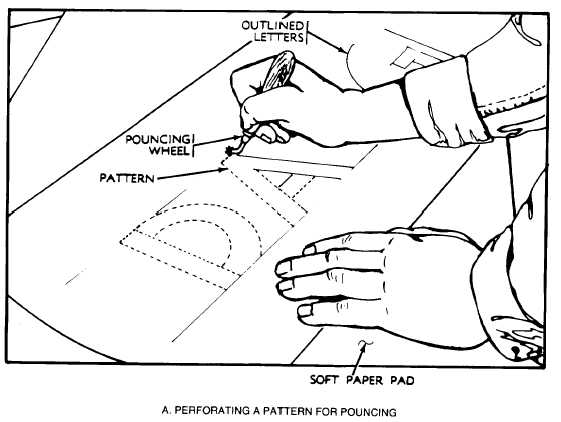TM 43-0139
d.
Dry color, powdered chalk, or other powder.
e.
Flint sandpaper, grade 2/0.
f.
Masking tape.
g.
A thin cloth.
6-13. PROCEDURE
a.
Pencil-in (draw) the letters, numerals, or design on a plain sheet of paper.
b.
Place the penciled-in paper on top of cardboard or other material which can be easily perforated by a pouncing
wheel. Then, by using a pouncing wheel, perforate the outline of the markings which have been penciled-in (See figure 6-
8A). If a pouncing wheel is not available, use a large needle or other sharp pointed object to perforate the outline.
c.
Turn the pattern over and use flint sandpaper, grade 2/0, to sand off all rough edges of the perforations (see
figure 6-8B).
d.
Prepare a pouncing bag by placing dry color, powdered chalk, or any other available powder in a thin cloth. Tie
the cloth so it forms a bag with the powder inside.
e.
Place the pattern in the desired position on the surface to be painted. Secure it in position with masking tape.
Then gently tap all perforations with the pouncing bag until the powder is worked through the perforations and onto the
painting surface (see figure 6-8C).
Figure 6-8. Pouncing Techniques (Sheet 1 of 3)
6-14

